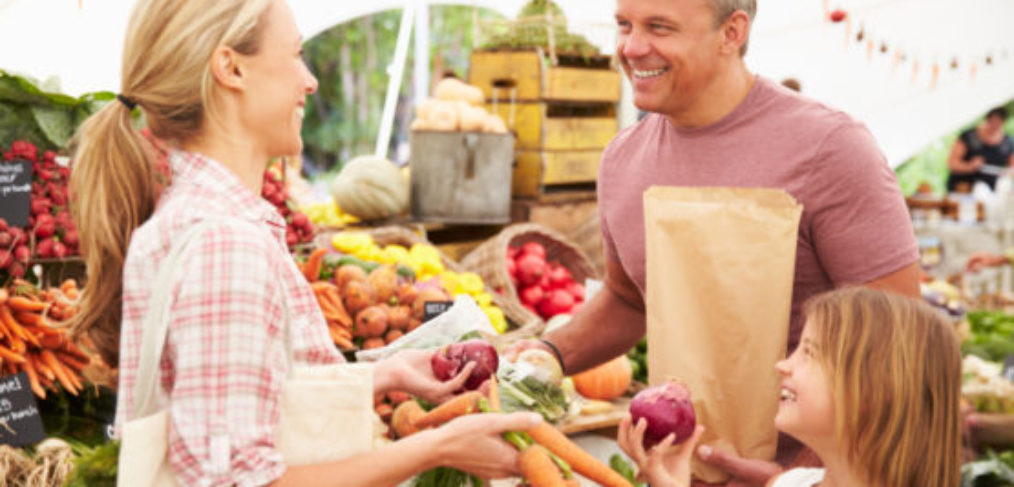“Organic” Isn’t Enough: Where Did Your Food Come From?

It wasn’t that long ago that it was tricky to find organic food.
Not only was it not easy to find, once you did find it, options were quite limited.
Limited, that is, in the US Marketplace, and that’s what this post will focus on.
Other countries continue to grow and source locally and fresh, and their food is organic without question, and without need to tout it as such, any sooner than one would need to mention that the blueberries, picked that morning, are blue.
India, Uganda and Mexico, are the top three countries with the most organic food producers (1), while the US holds the unfavorable distinction of having more genetically modified food than any other country (2).
New Zealand and Australia are known for their staunch opposition to GMO crops in favor of organic and local.
And in Europe, the organic market continues to grow. In 2017, it increased by almost 11 percent and reached 37.3 billion euros. Many of the major markets enjoyed double-digit growth rates (3).
This isn’t going to lead to an article about why we should leave the United States; rather, a look into what we can do to change things, each in our own way, regardless of how small or insignificant it might seem.
What prompted me to decide on this topic today in particular was an interview I heard on my favorite weekly podcast, the NPR production, How I Built This (4), a weekly narrative journey about innovators, entrepreneurs and idealists and the movements they built (a must-listen for anyone with an entrepreneurial spirit!).
Alice Waters was the guest this past week and if you’re in the food space, this is a name that needs no introduction.
An American chef, restaurateur, activist and author, the founder and owner of Chez Panisse, a Berkeley, California restaurant famous for its organic, locally grown ingredients and for pioneering California cuisine, which she opened in 1971 (5).
And the movement she built? Undoubtedly, what we now refer to day in and day out as farm to table.
I loved listening to her interview as so many of the things discussed resonated with me so deeply and were put so succinctly and eloquently, reigniting a passion within me on the importance of sourcing our food.
This goes beyond and even, perhaps, supersedes whether or not a food can be categorized as being “paleo” or “keto” or “vegan”; these are all just labels (and we don’t even really know who’s approving these labels anyway, do we?) and they don’t speak at all as to one critical thing: where did the food come from?
It’s not due to lack of awareness that we as Americans are willfully eating food of whose origin we are unsure; we know about it, but according to research, we tighten our belts and opt not to pay.
US consumers consistently say they want more sustainable products (and services) but are often unwilling to pay a premium; consumers care about a company’s sustainability and ethical sourcing efforts and may reward it with brand loyalty, but they generally don’t want to pay more for the products (6).
In other words, the idea and allure of procuring all our produce from the farmer’s market, fish from the local fish monger and grass-fed and finished beef from the rancher who sells at the very same market sounds great, but when the rubber hits the road, is the followthrough there with this mindful intention…. or is it just too hard and costly, making Costco and Walmart more convenient options?
Somehow, to borrow a brilliant term used by Ms. Waters in her interview, we’re ‘greenwashing’ our food and trying to position food labeled as organic, with no other stipulations in terms of where it came from, how long ago it was sourced, how the animals were raised and what they ate as somehow automatically making that food healthy.
Costco has become the largest organic grocer in America, surpassing Whole Foods with $4 billion in organic grocery sales last year (7); Whole Foods came in second with $3.6 billion.
Keep in mind, however, that organic grocery is not particular to produce, meat and fish; it includes packaged, canned and boxed items as well, which in and of itself speaks to the integrity of the product inside and how fresh and unrefined it could possibly be.
And while the concept of being able to walk into a mega store like Costco in order to purchase outstanding, local, fresh organic food in bulk at a low price sounds great, are we really thinking about total cost, above and beyond dollars paid at checkout?
How about the cost of not supporting our communities when we overstep what they may be capable of with local support, if more of us bought directly from them?
Wait… aren’t we supporting them indirectly if we purchase items marked as being local and organic within our grocery stores?
Not so fast… in the interest of bottom dollar, local, mindful sourcing is far from being the top priority when it comes to stocking product.
One case in point, a decade ago when Walmart publicly committed to “Supporting America’s Farmers as Produce Aisles Go Local,” they claimed they were on track to buy $400 million annually in “locally grown produce.”
The company refused to divulge how much it spent on produce overall, but it promised that nine percent of its US fruits and veggies would be local by the end of 2015.
Nine percent.
Where is the other 91% coming from?
How far has it traveled, how long ago was it harvested, what materials was it stored in and what was done to it to enable it to withstand time, temperature and handling?
When we factor in the other organic items we find in the stores, the frozen, powdered or canned items, the question of freshness becomes a moot point; how fresh can it actually be once those states are achieved and subsequently, how much nutrient density could they possibly have to offer?
The solution is both simple and complex at the same time.
Simple in that we simply just need to stop buying foods that are anything but local and fresh.
Complex in that we view this step as being too complicated, time consuming or expensive.
But it’s not until more of us support local and organic and conscious providers that the local producers have enough demand to produce more and begin to garner enough profit upon which they can sustain their businesses and support their families.
It starts with awareness and a thoughtful approach to what we buy.
We’re so used to being spoiled; we can buy anything at any time of year.
I, too am guilty of this; it wasn’t until about a decade ago that I personally began to consider anything other than organic.
I was living in Seattle at the time, doing my weekly shop at one of the Whole Foods there in the dead of winter, adding organic blueberries to my cart when it dawned on me that those very blueberries had been flown in from Chile.
Did I really need to have ‘fresh’ (only as opposed to the local, frozen option) blueberries in December?
Not really.
Why not select some of the local, fresh organic apples that had been grown locally?
And better yet, why not not buy them that day but purchase some apples over the weekend at a farmer’s market?
What about the wild fish I was about to buy? MSC Certified yes, but frozen and then shipped in from Fiji?
No, no, no.
It has to stop there.
Once you know, you can’t not know.
And while total dollars paid per week on food is far from unimportant for most, having a clear understanding that real, fresh food doesn’t necessarily have to break the bank is critical to employing new solutions.
Keep in mind:
- When we purchase local, in season produce, it’s less expensive to begin with because we’re not paying in arrears for shipping and handling
- When we focus on a largely, fresh plant (mostly veggies) approach to eating, cost is lower compared to even buying conventional, improperly sourced meat in far too large portions per person. Think of your mindfully sourced proteins as more of a garnish rather than the main feature in your meal.
- With fresh, real food being the foundation of what we eat, versus powdered / boxed / canned items, we pay less here are well due to not having to contribute to all the packaging costs.
- With a very simple approach to cooking, we create less chance of food waste due to not knowing how to prepare it as well as the opportunity to revamp leftovers into a new meal. On the podcast mentioned before, Alice Waters suggests that a single, properly sourced chicken can actually render three full meals for a family of four. How’s that for nothing wasted?
- When considering the hefty amount of confusion associated with food labeling, here’s the quickest way to cut to the chase: buy things that are not in a package in the first place! No need to label the ingredients in a stalk of broccoli or a piece of wild salmon. It’s just what it is!
An item labeled organic in and of itself is simply not enough and it’s about time we make becoming more aware the top priority.
There’s far too much at stake not to do so, for our families, our communities and our planet.
- FiBL/IFOAM. The World of Organic Agriculture: statistics and emerging trends.
- https://nomadcapitalist.com/2013/06/25/the-best-countries-to-live-abroad-and-gmo-free-no-genetically-modified-food/
- https://www.organic-europe.net/home-europe.html
- https://www.npr.org/podcasts/510313/how-i-built-this
- https://en.wikipedia.org/wiki/Alice_Waters
- http://spendmatters.com/2016/02/15/ethical-sourcing-do-consumers-and-companies-really-care/
- https://www.thedailymeal.com/news/cook/which-grocery-store-chain-sells-most-organic-food-surprisingly-not-whole-foods/060515
- https://www.motherjones.com/environment/2012/03/walmart-groceries-organic-local-food-deserts/





